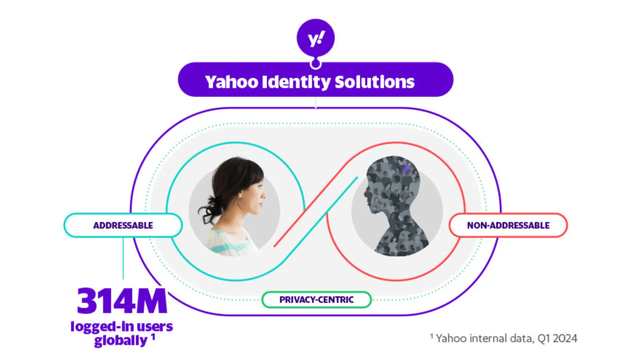ICYMI: Yahoo's conversion API aims to solve measurement hurdles in cookieless world: New solution allows advertisers to unify online and offline conversion tracking in real-time. https://ppc.land/yahoos-conversion-api-aims-to-solve-measurement-hurdles-in-cookieless-world/ #Yahoo #ConversionAPI #DigitalMarketing #Cookieless #Advertising
#cookieless
ICYMI: Yahoo's conversion API aims to solve measurement hurdles in cookieless world https://ppc.land/yahoos-conversion-api-aims-to-solve-measurement-hurdles-in-cookieless-world/ #Yahoo #ConversionAPI #DigitalMarketing #Cookieless #Advertising
Audience360 and ID5 join forces to address digital signal loss: Audience360's collaboration with ID5 and Adform yields impressive results in cookieless targeting, paving the way for future-proof digital advertising. https://ppc.land/audience360-and-id5-join-forces-to-address-digital-signal-loss/?utm_source=dlvr.it&utm_medium=mastodon #DigitalMarketing #Cookieless #Advertising #AudienceTargeting #DataPrivacy
In questo numero di #DaZeroADigital:
1️⃣ #Google cancellerà i dati degli utenti che navigano in “incognito”
2️⃣ #Recensioni #online: i fattori psicologici che ci spingono a leggerle
3️⃣ Rubati 54 miliardi di #cookie nel mondo, oltre 450 milioni in #Italia: a che servono e perché gli #hacker li cercano
4️⃣ Il furto dei #cookies: un motivo in più per incentivare l’approccio #cookieless
5️⃣ Perché le #aziende non possono usare il #riconoscimento #facciale nei luoghi di lavoro
👉 https://bit.ly/3VMrX1K
As a digital marketer, I am always on the lookout for new and innovative ways to improve the overall performance of campaigns for my clients. One method that has been gaining a lot of attention lately, in the wake of third-party cookie deprecation, is server-side tracking. In this blog post, I will explore what server-side tracking is, how it works, and why it is the future of digital conversion tracking.
What is it, you may be asking yourself… How is it relevant for me? Server-side tracking is a method of collecting data about user behaviour on a website or your app by sending requests directly to the server instead of relying on client-side scripts like Google measurement tags. This means that all tracking data is collected and processed on the server side, rather than in the user’s browser.
Server-side tracking works by sending tracking requests to your server every time a user interacts with your website or app. These requests contain information about the user’s behaviour, for instance which pages they visited, how long they spent on each page, if they have signed up to a newsletter, or purchased one of your products.
The server then processes this data and stores it in a database, where it can be analysed, sent to a media partner and used in the optimisation process to improve the effectiveness of your marketing campaigns. Because all tracking data is collected on the server side and considered first-party, it is more reliable and accurate than client-side tracking (often third-party), which can be affected by ad blockers, privacy settings, and other factors.
Clients always ask me, “But… Why is it the future of digital tracking?” There are generally several reasons that I give them:
- It provides more accurate and reliable data than client-side tracking, which means you can make better-informed decisions about your marketing campaigns.
- Server-side tracking is more secure than client-side tracking because it does not rely on third-party cookies or other tracking technologies that can be blocked or deleted by users. This means that you can collect data about user behaviour without compromising their privacy or security.
- Your media tags are hosted in a cloud server environment; you’ll still need a container tag client-side, but it would reduce the amount of loads required on a page. This will effectively speed up your site making it more user friendly, even more important on mobile devices that have poor signal.
- Server-side tracking allows you to integrate your marketing data with other business systems, such as CRM, ERP, and BI tools. This means that you can get a complete picture of your customers and their behaviour, which can help you create more effective marketing campaigns.
To wrap this post up, server-side tracking is the future of digital media tracking because it provides more accurate and reliable data, is more secure and allows you to integrate your marketing data with other business systems.
If you are not already using server-side tracking, now is the time to start. Feel free to reach out to IT Service Guru to see how we can help your business with your digital transformation.
Like, Comment or WordPress Reblog the post and Subscribe to IT Service Guru for future blog posts.
https://itservice.guru/server-side-tracking-the-future-of-digital-tracking-campaign-optimisation/
#Cookieless #DigitalTracking #DigitalTransformation #ServerSideTracking #ThirdPartyCookie
Even more control for your cookieless web analytics.
Use explicit opt-out when user revokes consent.
Our analytics does not require explicit consent. It is because it is cookieless, does not store Personal Data and does not transfer data outside the EU/EEA.
But in certain countries, you still need to allow users to opt-out.
It is as easy as setting a cookie 🍪 which when present, will disable tracking events.
🍪 Come funzionano le Topics API di #Chrome?
👉 Permettono di accedere agli argomenti d'interesse degli utenti per scegliere gli annunci #adv appropriati nell'era #cookieless.
🦾 Nelle immagini si vedono i miei interessi mappati e un esempio di classificazione di alcuni siti web.
#AI #MachineLearning #advertising #marketing
https://www.linkedin.com/posts/alessiopomaro_chrome-adv-tensorflow-activity-7106523388155707393-bJiO
Blog Think Big - Descubre lo que implica desactivar las cookies https://blogthinkbig.com/las-cookies-desactivarlas #cookies #privacidad #cookieless
This week, we removed the last bits of 3rd party cruft from our social walls. No 3rd party tracking, zero Cookies, no Google Analytics, Google Fonts on OUR walls. Kudos @walls_io@twitter.com for respecting our users privacy! 💕 More: https://lnkd.in/d3QEX25u
#privacy #gdpr #cookieless
@nipos
@webmontagkiel
Kann man doch auch einfach lokal hochladen und einbinden? #cookieless 😁
I am trying to get my blog complettly cookieless. I just kicked #Cloudflare as HTTP Proxy and now I have to find out which plugin uses a session_start() in his code. #Wordpress #GDPR #DSGVO #Cookieless




